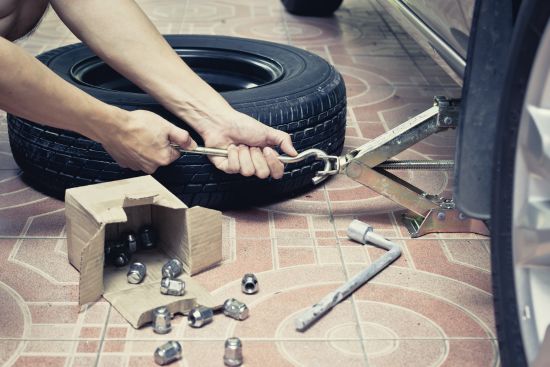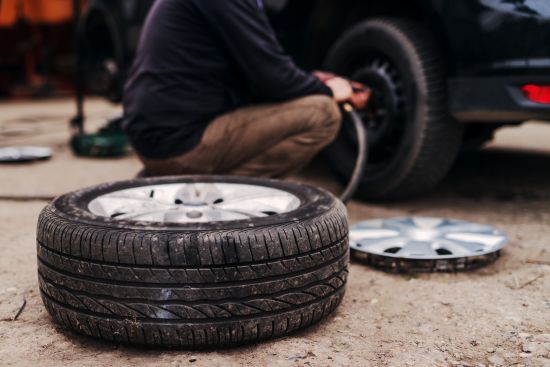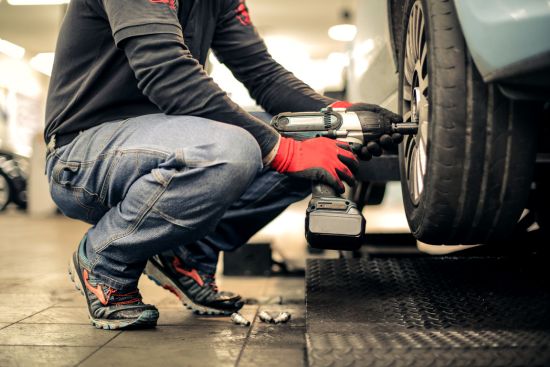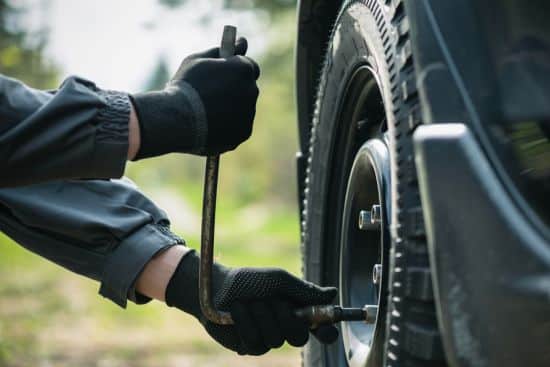Purchasing and installing new or used tires can be incredibly stressful. Below is a simple guide to the ins and outs of tire installation. I will help you understand the process so that you can either put them on yourself or understand what’s happening when you pay someone to do it for you. Below I will share my guide to tire installation, where to find the best service in your area, and my experience with the shop that does tire installation near me.
Map of Tire Installation Near Me
If you’re looking for locations of “Tire Installation Near Me”, see the map below for locations…
Where Can I Get My Tires Installed Near Me?
installation is a complex process and requires some special equipment. It’s not advised to install your own. That being said, installation is a fairly common process. and easy to find a local service near you. Whether you have new or used tires you have plenty of options.
Most garages and auto repair shops will be able to mount tires for you. Since it can be quite an involved process, big retailers and brands like Walmart and Costco don’t always offer installation as part of their auto service departments. Probably the best place to get new tires mounted is right at the tire dealership. A tire shop will almost 100% be able to mount them for you. Many places offer a discounted installation with the purchase of new tires.
With customers ordering tires online, it’s becoming increasingly common for customers to buy tires (new or used), and then bring them to a garage or auto repair shop to have them installed. If this is your situation, it may be more advisable to do this at a garage rather than at a tire manufacturer like Goodyear or Michelin.
How Much Does it Cost to Install Tires?
The price of wheel installations can vary greatly depending on where you go, what kind of vehicle you drive, how big they are, and whether or not the rim needs to be replaced.
While the actual mounting is routine, there are typically a host of other services (and costs) that go into an installation. The installation itself should not cost more than $45 per tire. A new valve stem will cost about $3 per tire, and the cost of disposing the old tires will cost about $4 each.
Many garages or auto repair shops offer protection plans with tire installations which can run as high as $50. It’s like insurance and can be well worth it if something goes wrong.
Finally, after a new tire purchase and installation you should also get an alignment, which will run you about $15 per tire. Again, these prices are all averages and fluctuate depending on the location where you go, what kind of car you drive, and what kind of tires you’re purchasing and installing. These are all about what the shop that does tire installation near me charges.

serviceman repairman worker lubricating car tire at workshop befor fitting
How To Install a Tire – Tire Installation 101
Installing new tires is not as complicated as it looks, but it’s crucially important that it be done correctly. Installation follows ten basic steps, which will be outlined in more detail later in the article.
These ten steps are:
- Deflate the tire by removing the valve stem core.
- Remove the tire from the rim using a tire machine.
- Check the rim for rust pitting.
- Smooth the tire’s rim.
- Apply tire bead lubricant to the tire’s beads and rim.
- Install the tire with the tire machine, and then remove the tire from the machine mount.
- Apply more tire bead lubricant to the tire’s beads and rim.
- Reinflate the tire with the stem core still removed.
- Re-install the stem core, and inflate the tire to its maximum pressure.
- Do a balance check on the tire.
It’s very important that all ten of these steps be followed and done in that order. Tires should never be mounted or installed while they are inflated. You can, of course, safely remove it from the rim without a tire machine, but you won’t be able to mount it onto your car without one.
What to Consider When Getting Tires Installed?
Before you decide to get tires installed, make sure the tires you have really do need to be replaced. Tires are hardier than we give them credit for and can safely take you thousands of miles in pretty bang-up condition. That being said, remember that your tires are made of rubber, which slowly deteriorates with long-term oxygen exposure.
So no matter what, you should consider replacing them about every 6 years. Before you’ve hit that threshold, however, if you notice extreme tread wear, cracks on the sidewalls, discoloration, or bulging on any of your tires, it’s probably time to change them out. You can learn more about how to inspect a tire here.
If you are replacing damaged tires, you want to ensure that the underlying problem is the tires and not structural damage inside the car. Alignment or suspension problems can sometimes cause uneven tread wear, and if those problems are not addressed, the replacement tires you install will eventually end up with the exact same problem(s).
It is also important that you are mounting a tire on a quality rim. Some people also save money buying used car rims and fail to realize they are mounting a tire on a damaged wheel. Only mount tires on wheels that are structurally sound.
What’s the Process of Tire Installation?
- The first step is to deflate the tire by removing the valve stem core. If you’re installing brand new tires, you should get a new valve stem. They can be reused from one tire to the next.
- Use the tire machine to separate the tire from the rim. There are ways, like a tire iron, to separate the tire from the rim without a tire machine, but the machine is easier. Your garage or mechanic will definitely be using a machine.
- Now the rim needs to be inspected. Discoloration and bulging in the tires are often caused by rust pitting on the rims. Putting new tires on a damaged rim is like setting a broken finger by wrapping it in a band-aid. To check the rim for rust pitting, run your finger along the inside lip. It should feel perfectly smooth (no exceptions).
- If you do find rough patches on the rim, you don’t necessarily have to replace it. Garages and mechanics use several different grades of abrasive pads (like Scotch Brite pads, for example) to smooth down the inner lip of the rim. They do this to the part of the rim closest to the beads. This is a critically important step. Putting a damaged rim on your car makes changing your tires completely pointless. If the rim is too damaged to be scrubbed smooth, you’ll need to replace the rim as well as the tire.
- Now a generous amount of bead lubricant should be applied to the rim and the tire beads. Yes, you must use tire bead lubricant specifically – soapy water or grease won’t do the trick.
- Once the rim and the beads are slick and slippery with lubricant, you can use the tire machine to install the tire.
- Once the wheel has been installed, apply more lubricant to the rim and the beads.
- Now it’s time to inflate the new tire. Pump it up to its maximum pressure, which is printed on the sidewall. At this point, you’ll understand the reason for all that lubricant. If the beads and the rim are slippery enough, the beads will pop right onto the rim with no problems.
- Now that the tire has been set onto the rim, install (or reinstall) the stem core, and re-inflate the tires to their maximum pressure.
- Once the tire has been fully installed, do a balance check to make sure that the tire is balanced.
Importance of Professional Tire Installation Service
- Safety Concerns
When it comes to having a new set of tires installed on your vehicle, prioritizing safety is crucial. Opting for a professional tire installation service ensures that every aspect of the process is handled with utmost precision and care. This is vital because improperly installed tires can pose significant safety risks, affecting the vehicle’s stability and your control over it, especially while driving at high speeds or in challenging conditions.
- Ensuring Proper Balancing and Alignment
A key benefit of professional tire installation lies in the assurance of proper balancing and alignment. When tires are accurately balanced and aligned, it not only provides a smoother ride but also minimizes the wear and tear on the tires, thereby extending their lifespan.
Professionals have the expertise and equipment to ensure that the tires are installed and balances correctly, which can be particularly crucial for high-performance vehicles or those driving in varied terrains.
- Prolonging Tire Life and Vehicle Performance
Investing in the best service for tire installation is not just about safety. It’s also about enhancing and prolonging the overall performance of your vehicle. A new set of tires, when installed correctly, provides optimal traction, improves fuel efficiency, and enhances the driving experience.
Moreover, professional services often allow you to enter into maintenance programs that ensure your tires are always in top-notch condition. Thereby ensuring that your vehicle’s performance is consistently efficient and reliable.
In conclusion, while it might be tempting to seek cheaper alternatives for tire installation, it’s imperative to research and understand the immense benefits that professional tire installation service also provides.
Not only does it offer peace of mind and confidence in the safety and reliability of your vehicle. But it also ensures that your investment in a new set of tires is well-protected and utilized to its fullest potential. Always remember to visit a reputable service provider and do not hesitate to ask questions or seek advice to ensure your vehicle is in safe hands.
Is Mounting and Installation the Same Thing?
The simple answer is yes. The more detailed answer, of course, is no.
“Mounting” specifically refers to putting the tires onto the wheels, while “installing” is putting the wheel/tire combo onto your car. You can think of mounting as the first step in the overall process of installation. But if that sounds like splitting hairs, it is, and the two terms are often used interchangeably.
So if you need new tires and you’re checking out prices, look for either word to tell you what the cost will be. You’ll never see both words together on the same price list unless they’re presented as a combo (for example “tire mounting and installation”). You’ll never be charged separately for services of “mounting” and “installing” – that wouldn’t really make sense.
The machine used for tire installation service is often called a “tire mounting machine” (I don’t think I’ve ever seen a “tire installation machine”), but again, splitting hairs. Also, don’t be afraid to use either word with your mechanic or garage. Asking to get new or used tires mounted and asking to get tires installed is asking for the same service.
Maintaining Your New Tires
Maintaining your tires is crucial for ensuring safe and efficient driving. Let’s delve into how you can keep your new tires in top-notch condition.
- Regular Checks and Maintenance Tips
- Check Tire Pressure Regularly: Ensure that your tires are always inflated to the recommended pressure. This not only ensures optimal performance but also prolongs the life of your tires.
- Inspect Tires: Regularly inspect your tires for any visible damage, such as cuts, punctures, or bulges. Immediate attention to visible damages can prevent further issues.
- Rotate Tires: Ensure to rotate your tires as per the manufacturer’s recommendation to ensure even wear.
- Alignment: Ensure your tires are properly aligned to avoid uneven wear and ensure straight vehicle tracking.
- Avoid Overloading: Always adhere to your vehicle’s load capacity to avoid putting undue pressure on the tires.
- When to Seek Professional Help for Tire Issues
- Unusual Noises or Vibrations: If you notice any unusual noise or vibrations while driving, it’s imperative to seek a tire installation service immediately.
- Visible Damage: If you observe significant damage or irregular wear, it’s crucial to consult with professionals.
- Tire Warning Light: If your tire warning light illuminates, make an appointment with a service provider to check the issue.
- Flat or Constantly Leaking Tire: If your tire is flat or constantly losing air, visit a professional service center to get it inspected and repaired.
- Ensuring Longevity and Optimal Performance
- Purchase Quality Tires: Investing in good quality brands ensures that your tires have a good lifespan and perform optimally.
- Balanced Driving: Ensure to drive at balanced speeds and avoid harsh braking to prolong tire life.
- Use Season-Appropriate Tires: Ensure to use winter tires or all-season tires as per your location’s climate to ensure optimal performance.
- Store Properly: If you have spare tires, ensure they are stored properly to avoid damage.
Always remember, your tires are the only point of contact between your vehicle and the road. Ensuring they are in optimal condition is paramount for safe driving. Regular checks, adherence to maintenance tips, and timely professional services will not only ensure longevity but also enhance your driving experience. So, always be proactive about tire maintenance and stay safe on the roads!
Tire Installation Near Me – Conclusion
Installation can seem like a big job, and it is, in the sense that’s in an incredibly important job. That being said, it’s something that garages and mechanics do all the time.
Before you decide to get new or used tires installed, make sure you actually do need to replace your tires. Signs that one (or more) of your tires has reached the end of its life are extreme tread wear, cracks on the sidewalls, discoloration, or bulging. Any of these features indicate that the tire is no longer safe to drive on. If you notice any of these signs, mention them to your mechanic.
They may indicate trouble, not with the tires themselves, but with the body of the car, especially with the suspension system. Putting new tires on a badly aligned car or a faulty suspension system will just necessitate yet another installation a few thousand miles down the road.
Mounting and installing tires have the exact same meaning, so if you see either one, it just means “putting tires on the car.” That’s my experience with tire installation near me.








